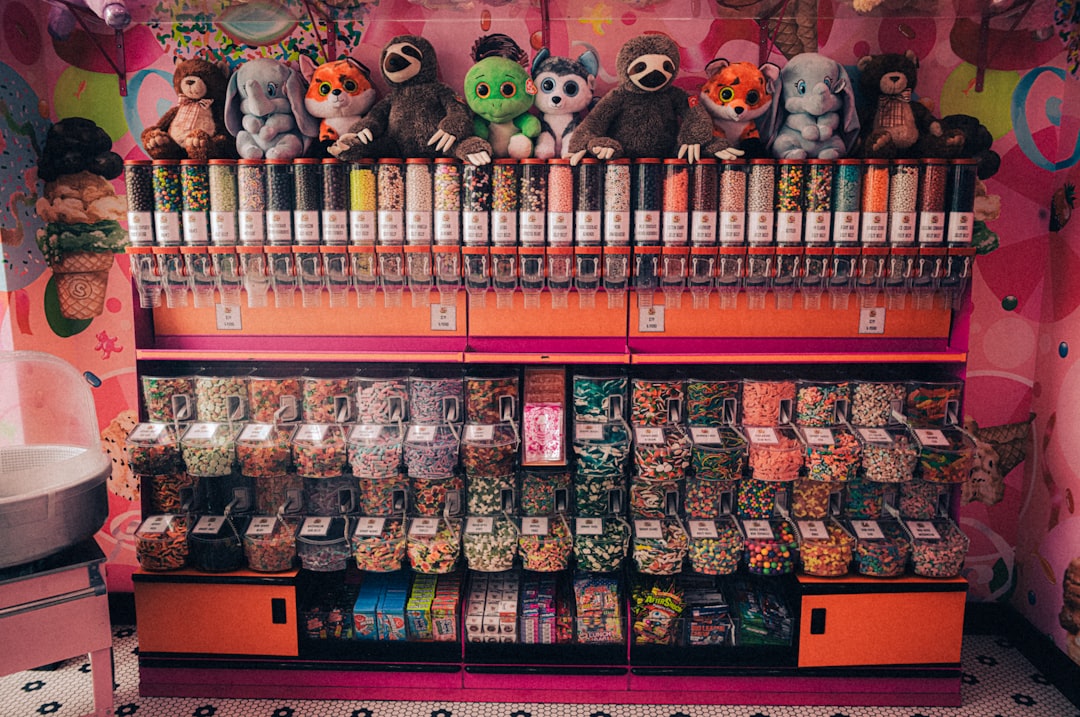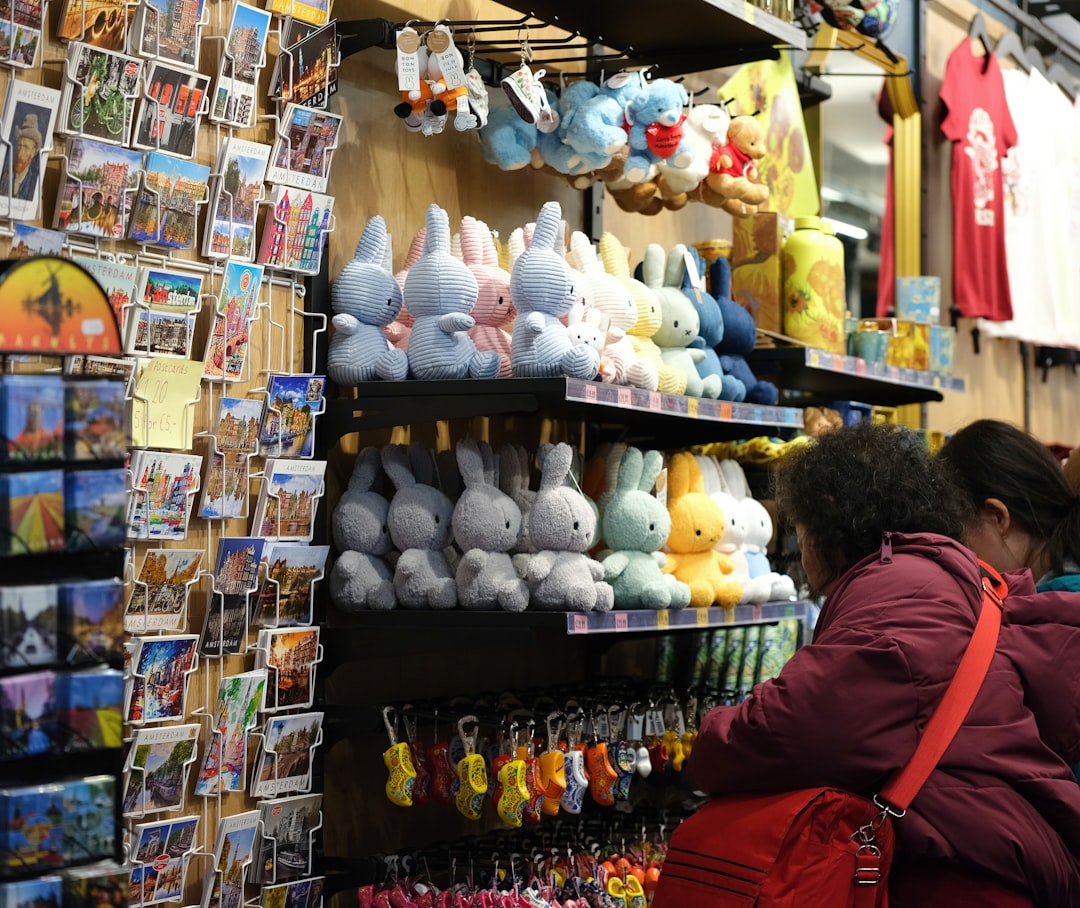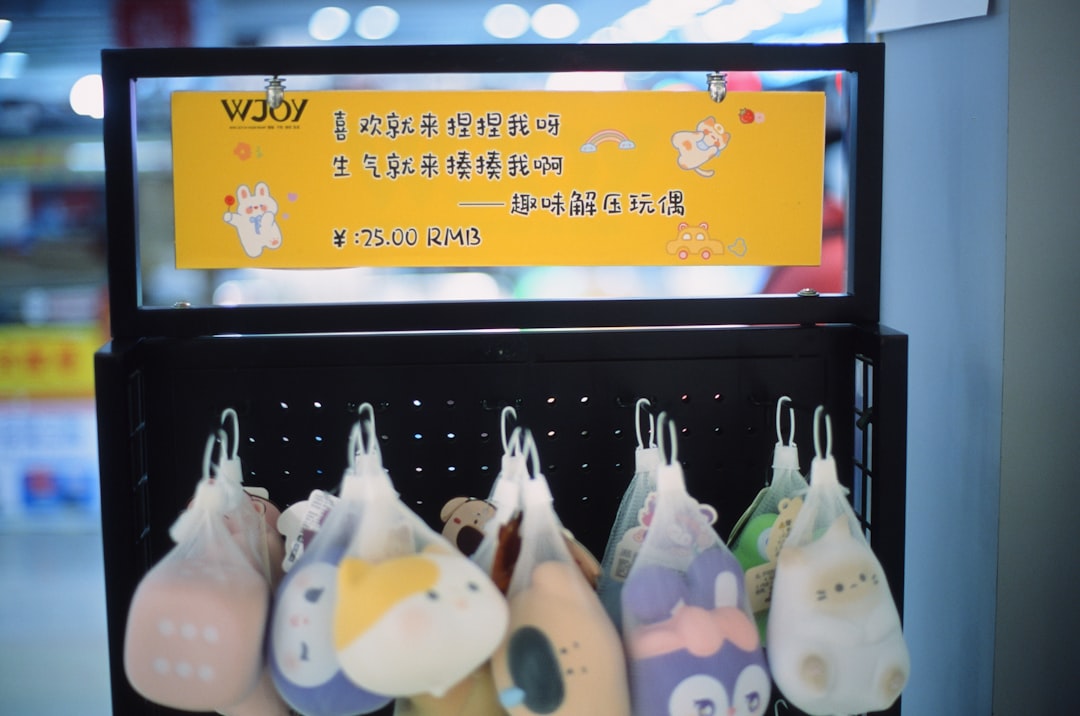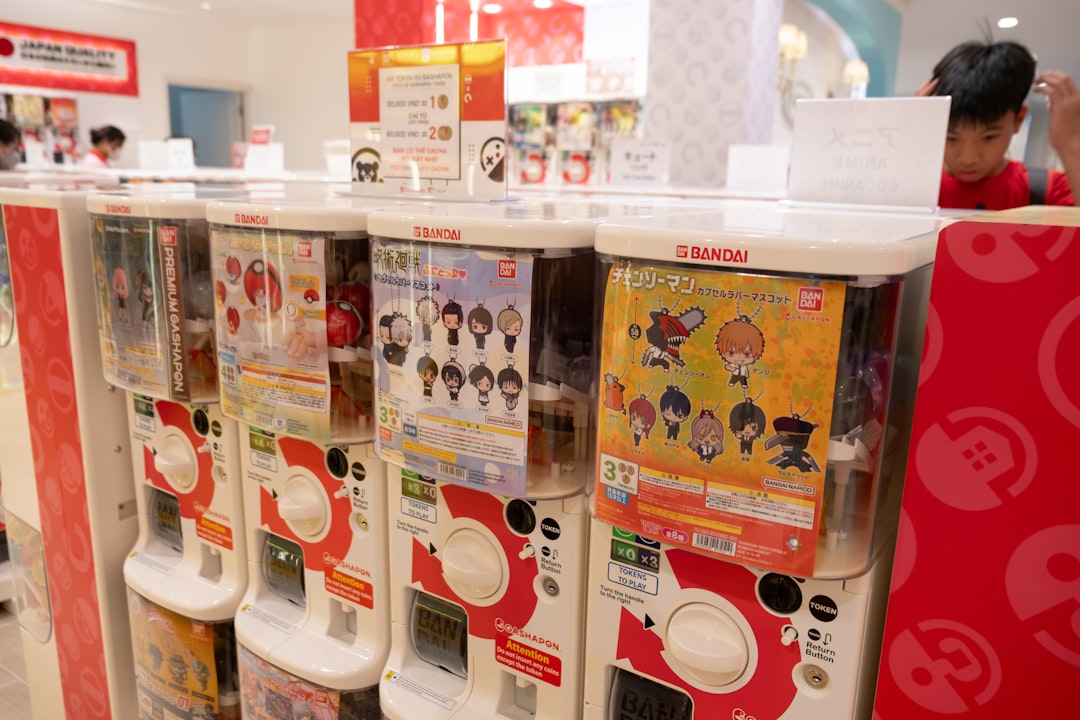

Engage prospects with a scan and streamline customer engagement with FREE QR code marketing tools by Sona – no strings attached!
Create a Free QR CodeFree consultation

No commitment

Engage prospects with a scan and streamline customer engagement with FREE QR code marketing tools by Sona – no strings attached!
Create a Free QR CodeFree consultation

No commitment
Pokémon card retailers are facing significant transformation as both digital and physical channels drive fierce competition for collectors and casual buyers. As the Pokémon Trading Card Game surge continues, retailers confront unique challenges: authenticating high-value cards, tracking buyer behavior across multiple platforms, and increasing engagement in-store and online without creating friction. At the same time, missing opportunities to capture high-value prospects—often because they are not tracked in a central CRM—results in lost business and dwindling loyalty in a booming market.
With new collectors entering the market and established enthusiasts seeking rare cards, retailers must differentiate not only on inventory but also on seamless experience. Many retailers struggle with fragmented data, from anonymous website visitors to in-store collectors, leading to incomplete lead profiles and missed revenue opportunities. QR codes now offer a way to bridge these gaps, transforming every physical and digital asset such as in-store signage, product packaging, and online product pages into actionable, measurable entry points. This approach enables retailers to connect with shoppers immediately, collect critical engagement data, and quickly identify high-intent buyers.
By strategically implementing QR codes, Pokémon card retailers can blend offline and online engagement, boost loyalty, surface engagement signals that might otherwise go untracked, and streamline data collection into a unified account view. This not only enhances the buying and selling experience for collectors but also delivers granular, actionable insights, ultimately helping retailers stop missing prospects, connect more meaningfully, and achieve higher ROI in a competitive landscape.

Retailers often find themselves struggling to track buyer journeys that span both physical locations and digital touchpoints, which makes it hard to know which tactics actually drive a sale. QR codes solve this by bridging analog processes like paper price guides, manual buylist submissions, or clipboard loyalty signups into instantly accessible, trackable digital experiences. For example, a QR code on a singles display can connect shoppers to live price guides and condition grading tips, while capturing intent data with every scan.
When paired with a robust platform, these interactions synchronize directly into your CRM and marketing tools. That means fewer missed high-value prospects and smarter, more responsive outreach. With Sona QR, retailers can create dynamic codes for different use cases, unify scan data in one dashboard, and trigger automated follow-ups. This approach shortens time to value, creates a more consistent buyer experience, and helps teams see which placements and messages turn collectors into customers. Start creating QR codes for free.

Reaching Pokémon collectors typically involves a patchwork of flyers, in-store posters, packaging, and direct mail, yet it is often difficult to know which tactics are capturing real interest or driving revenue. Collectors research online, visit stores, and participate in events. In each case, valuable engagement signals often go undetected. QR codes allow retailers to convert these touchpoints into actionable data, enabling real-time identification of anonymous traffic and the chance to connect with qualified buyers instead of hoping for follow-up. A real-world example: the Pokémon Pass app drove store visits by trading virtual rewards for in-person actions.
Dynamic QR codes support campaign updates and A/B testing long after materials are printed, while analytics help retailers move past guesswork to see precisely which placements and actions matter. For common materials like event posters, product packaging, tournament flyers, and price sheets, the ability to update the destination link reduces waste, conserves design budgets, and keeps experiences current even when product details or promotions change unexpectedly. For high-visibility assets like event posters, this flexibility is critical.

Pokémon card retailers grapple with fragmented customer interactions, from anonymous browsers to high-value collectors moving between store and website. QR codes create streamlined entry points, with formats tailored to the most pressing needs. The best choices often include web links for price guides and promotions, forms for buylist or club registrations, and vCards for instant contact. Over time, a single QR platform ensures that engagement data from every channel is captured and unified, reducing the risk of prospects falling through the cracks.
Dynamic QR codes add critical flexibility. Retailers can update the destination based on evolving inventory, new promotions, or insights from campaign performance. This is particularly useful for seasonal events, scarcity-driven offers, or shifting buylist priorities.

Many retailers miss growth simply because they do not know where collectors interact most or which interaction led to a sale. Deploy QR codes at every high-traffic and high-intent spot. Use them at the counter for instant loyalty enrollment, on product packaging that links to authenticity and care guides, and on event signage to streamline check-in and capture first-party data. Each placement reduces friction for the shopper and creates a traceable event for the retailer. For in-store assets, consider interactive event signage that routes scans to forms or promos.
Online listings can also leverage QR codes to bridge the hybrid shopping experience. For collectors browsing on desktop, a code on the product page can let them save an offer to their phone or sign up for restock alerts. If they later visit in person, the same QR ecosystem can recognize context and adapt the experience based on location or campaign tags.

Pokémon card retailers often invest in advertising but struggle to identify which interactions indicate true purchase intent or collector value. Every QR scan, whether from an event banner or a price lookup, signals an individual’s position in the collector journey. When your QR ecosystem uses unique codes for awareness, consideration, and conversion touchpoints, you can tag scanners and segment them automatically.
For example, a scan on a restock alert flyer suggests imminent purchase interest, while a scan on a grading guide may indicate a high-end collector or seller. Mapping these signals to audience lists allows more relevant follow-up. With Sona QR, scan data can flow directly into your CRM and ad platforms, powering custom audiences and lifecycle automations that respond to buyer behavior in real time. For paid media, use Sona’s intent-driven retargeting playbook to turn these signals into action.
The challenge of keeping branding, messaging, and data in sync across events, shops, packaging, ads, and mailers is real. QR codes unify these channels by turning every physical touchpoint into a measurable online action. When online and offline behaviors sync into one system, retailers can justify spend, refine creative, and double down on the placements that drive conversions. Learn how this rolls up across journeys in Sona’s guide to multi-touch models.
Think of QR codes as the offline onramp to your digital marketing engine. They make print assets transparent, events accountable, and in-store moments actionable. With a centralized platform like Sona QR, you can manage all codes, monitor performance, and sync data to tools like HubSpot, Salesforce, and ad platforms to keep follow-up timely and relevant.
By consolidating engagement metrics and contact data across every channel, retailers gain a clearer revenue picture. That clarity informs smarter budget allocation, better creative, and targeted offers that resonate with each audience segment.
Start by defining a clear business goal that matches your growth plan. Typical objectives for Pokémon card retailers include increasing collector club signups, tracking price guide scans tied to purchases, capturing buylist submissions from potential sellers, or driving pre-orders for new sets.
Align each QR code to a single purpose and outcome, then decide how you will measure success. For example, if the goal is to boost prerelease RSVPs, set targets for scans, form completions, and attendance, and determine how that attendance translates to sealed product sales and future loyalty engagement. See how to connect scans to outcomes in Sona’s piece on pipeline impact.
Dynamic QR codes are recommended for most campaigns because they are editable, trackable, and easier to optimize over time. If a set details page changes or a promotion expires, you can update the link without reprinting materials. Static codes work for fixed destinations like a PDF rulebook or a general store info page.
Consider where the code will live and how long it needs to function. Event-specific codes may be replaced often, while evergreen codes for loyalty enrollment or buylist submissions should be dynamic to support ongoing optimization and multichannel attribution.
QR codes must be visible, on-brand, and technically reliable. Add a clear call to action under the code so collectors know what they get, such as Scan for live prices or Scan to RSVP. High contrast between the code and background improves readability, and a scannable size that matches viewing distance is critical.
Before deployment, test scans across lighting conditions, angles, and device types. Test both iOS and Android, and verify that the landing experience is mobile-optimized. A smooth path after the scan matters as much as the scan itself.
Prioritize placements that capture high-intent traffic. In-store endcaps, checkout counters, and slab cases are prime real estate. Event lanyards, registration desks, and trade show booths invite quick scans during busy moments. Direct mail and packaging inserts extend reach to at-home collectors who may not follow you on social media.
Match placement to likely behavior. A price guide QR belongs on a singles case or binder label. A prerelease RSVP QR belongs on event posters and social posts. A buylist QR belongs at the appraisal desk and on your website’s sell-to-us page. For events, add scannable event badges to speed check-ins.
Go beyond basic scan counts. Track scan context by code, location, and time, then connect scans to form fills, RSVPs, purchases, or buylist submissions. This lets you tie campaigns to revenue and uncover which placements deliver the highest ROI. For bridging physical to digital, read Sona’s offline attribution guide.
Use A/B testing for landing pages, CTAs, and even design elements like QR size and framing. Retire underperforming placements and double down on those with higher conversion rates. With Sona QR and Sona.com, you can capture real-time performance, sync with your CRM, and attribute revenue across multi-touch journeys.
Retailers often struggle to tie marketing activity back to sales, especially when the collector journey spans offline and digital environments. Without visibility into every touchpoint, it is hard to prove ROI or improve decision-making. Modern tracking tools now let retailers capture granular data on every scan, including time, device, location, and intent, and push that data into CRMs for lead scoring and personalized follow-up. More advanced solutions even allow retailers to tie revenue directly to individual scans, providing clarity on what is working and ensuring marketing investments are backed with data.
Sona QR and Sona.com integrate these needs into a connected stack. Sona QR captures scan-level engagement with channel and placement context, while Sona.com enriches identities, stitches cross-channel touches, and attributes revenue to QR-driven journeys. Together they transform a scan into a signal that your team can act on immediately. For journey analysis, compare multi-touch attribution against single-touch models to understand true impact, and use Sona’s HubSpot integration to sync insights.
When you connect scan activity to outcomes, QR codes become an integral part of your performance marketing strategy. This unlocks smarter budgeting, stronger creative, and confident decision-making.
Expanding QR success is about consistency, clarity, and automation. Make it easy for collectors to understand why they should scan, then design the journey so the next step is obvious. Train staff to point out QR-enabled benefits at the right moments, especially during busy events or high-value appraisals.
Choose tips that match your most common media and your current goals. If tournaments drive significant traffic, prioritize RSVP and check-in flows. If your core objective is to grow your seller pipeline, emphasize buylist and appraisal flows and nurture those audiences with tailored content.
Retailers frequently report missed sales or slowed growth because collector engagement was not carefully tracked. QR codes change that by making every touchpoint measurable. Shops have used QR codes on limited-edition packaging and top loaders to link to authenticity and valuation tools, then traced those interactions through to purchases and repeat visits. With dynamic codes, they updated landing pages mid-campaign to promote new set drops or bundle offers without reprinting. For inspiration on bridging digital and physical, review Pokémon Pass and how it used incentives to drive store traffic.
Events are another rich source of inspiration. Stores add QR codes to prerelease posters, letting players RSVP and join waitlists instantly. On event day, QR check-in accelerates entry and creates a tagged audience for post-event offers tied to the featured set. Influencer collabs and livestreams use on-screen QR overlays to route viewers to curated collections, special discounts, or club memberships. Each scan builds a segment that can be nurtured with relevant content and timed promotions.
QR codes are quickly becoming an indispensable bridge in Pokémon card retail, addressing persistent challenges such as data fragmentation, anonymous buyer journeys, and elusive ROI attribution. By weaving QR codes throughout physical and digital assets, retailers can capture real engagement, unify the collector experience, and connect outcomes directly to revenue. The result is a reliable way to act on more opportunities, serve collectors with timely information, and direct investment toward the channels that produce measurable returns.
Pokémon card retailers ready to innovate can use QR codes to bridge digital and physical gaps, surface new growth opportunities, and ensure high-value prospects are not lost in the shuffle. By unifying tracking, automating audience segmentation, and integrating actionable insights across every collector touchpoint, even a single campaign can deliver outsized results. Now is the time to move from missed connections to measurable outcomes: experiment with data-driven QR strategies, use platforms like Sona QR and Sona.com for attribution and automation, and watch both collector relationships and bottom-line performance improve.
QR codes have transformed Pokémon card retailers from simple point-of-sale locations into interactive hubs of customer engagement and loyalty. Whether it’s attracting new collectors, enhancing in-store experiences, or deepening fan connections, QR codes replace outdated marketing with instant, mobile-friendly interactions that capture valuable data and drive repeat visits. Imagine knowing exactly which cards, displays, or events spark the most excitement—and being able to optimize your campaigns on the fly.
With Sona QR, you can create dynamic, trackable QR codes in seconds, update promotions without reprinting, and link every scan directly to sales and customer insights. No missed opportunities, just smarter strategies that turn casual browsers into passionate collectors. Start for free with Sona QR today and transform every scan into a winning move for your Pokémon card retail business.
You can buy Pokémon cards online through various Pokémon card retailers that offer both digital and physical channels, often enhanced with QR code technology for seamless engagement.
To redeem a Pokémon card QR code, scan the code with your mobile device to access the linked content such as authenticity guides, price information, or official redemption pages as detailed in Pokémon’s code redemption FAQ.
Scanning Pokémon card QR codes provides instant access to live price guides, event RSVPs, loyalty programs, authenticity verification, and buylist submissions while enabling retailers to track engagement and offer targeted promotions.
Retailers differentiate on inventory and seamless buying experiences, often using QR codes to link to live price guides and promotions that help collectors find the best prices through updated market values.
You can sell your Pokémon code cards for cash by scanning QR codes at retailer appraisal desks that open guided buylist forms to capture card details and condition, facilitating faster evaluation and follow-up.
Use Sona QR's trackable codes to improve customer acquisition and engagement today.
Create Your FREE Trackable QR Code in SecondsJoin results-focused teams combining Sona Platform automation with advanced Google Ads strategies to scale lead generation

Connect your existing CRM

Free Account Enrichment

No setup fees
No commitment required

Free consultation

Get a custom Google Ads roadmap for your business






Launch campaigns that generate qualified leads in 30 days or less.
